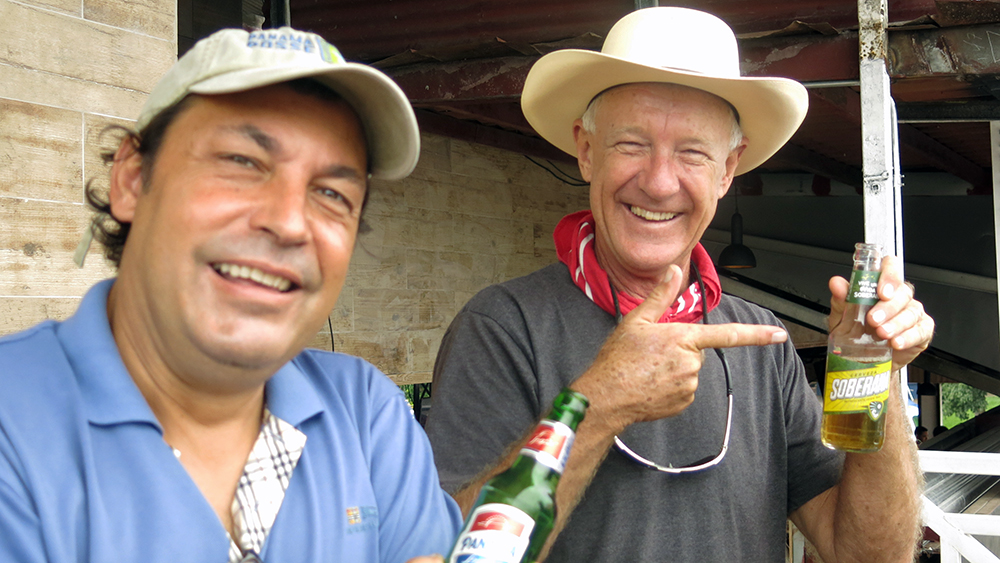
Dietmar with Neil enjoying a Soberana – great name for a beer!
Panama City was a blast! One of the pleasures of travelling around the city by bus was the opportunity to look around; Downtown was crowded with skyscrapers competing for the most radical and eye-catching designs, old colonial offices with immaculately clipped lawns border the slum tenements of Cinco el Mayo and shop houses arrayed with cheap clothing line Avendia Central, the main shopping street. It reminded us a lot of Singapore.
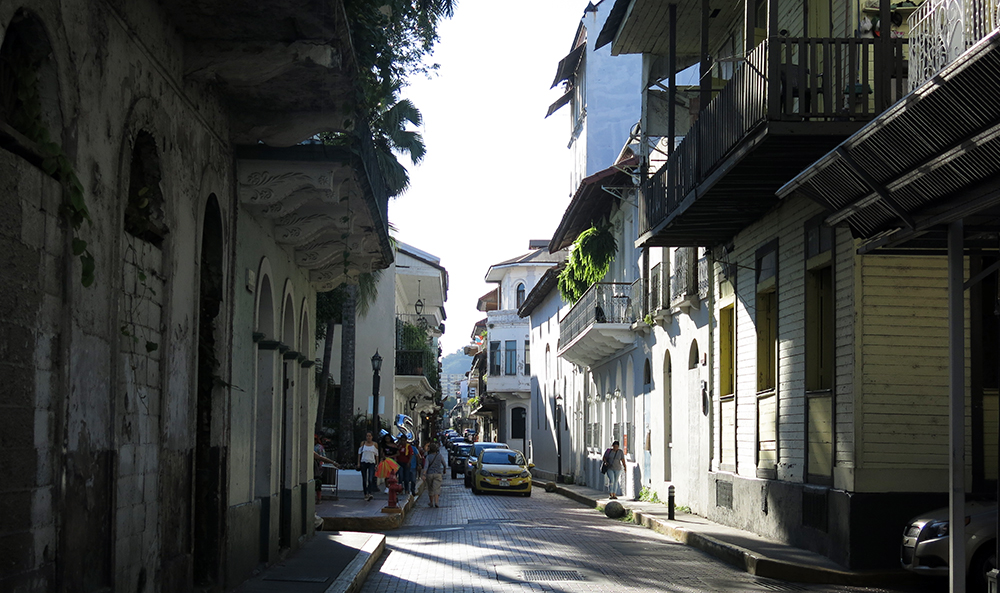
The old buildings in Casco Viejo have been restored into trendy shops and restaurants
The old Spanish quarter known as Casco Viejo is the most hip and trendy part of the city. The offices of government were established there in 1673 after the original settlement of Panama was burned to the ground by the Welsh pirate Henry Morgan, or so the story goes. As the modern city grew Casco Viejo was abandoned and became a barrio where no rational person dared to tread. Since it was declared a World Heritage Site in 1997 money has poured in, the undesirables have been relocated and most of the old buildings have been restored and reopened as restaurants and bijou hotels. It’s very cool place to hang out.

Panama Metropolitan Cathedral in the plaza in Casco Viejo
Medical tourism is a growth industry in Panama City, developed mainly for Americans looking for good medical treatment at a much lower cost than back home. Every “-ology” is available here so we took advantage of the facilities to catch up on various neglected medical issues. One of the disadvantages of being sea nomads is that we are never ashore long enough to arrange appointments, follow-ups etc. etc. So we’ve had everything poked and prodded and are now certified fit and well.
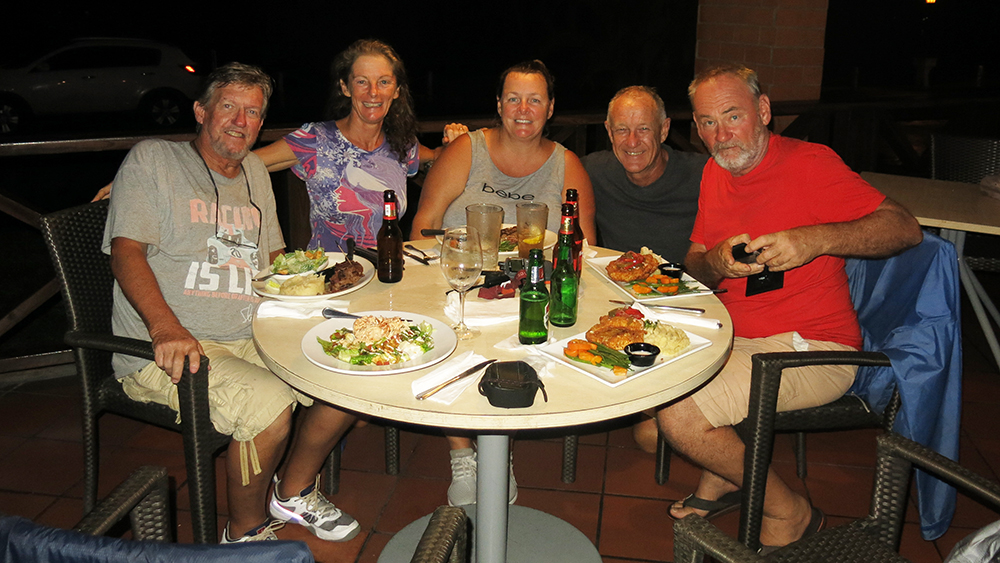
Having dinner in Balboa with Tara, Barry and Denny; friends from other boats in the anchorage
The anchorage at Las Brisas is close to the entrance to the Panama Canal and we joined our friends Gale and Slim on board S/V Mis Gale for their northward passage through the Canal from the Pacific to the Carribean. When transiting the locks small vessels use long ropes to hold their position in the lock chambers, and four line handlers are needed on board to tend the lines. We were glad to help out and were keen to get some Canal experience before going through in Distant Drummer next year.

Aboard Mis Gale with Slim, Gale, Stephanie and Andrew to transit the Panama Canal
At the Pacific end of the Canal the Miraflores locks raise vessels 85’ in a series of three steps. The chambers are huge: 1000’ long by 110’ wide and the dank green walls towered about 30’ above us as we passed through the lock and tied up alongside a small passenger ship. The lock gates closed and water began filling the chamber, swirling and eddying as it rose up the walls and in about ten minutes we were peeping over the top of gates in to the next lock. We repeated the process twice more and by lunchtime we were through the Miraflores locks.
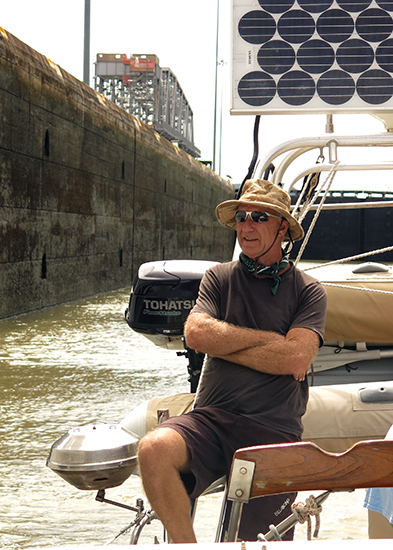
Neil minding the starboard aft line in the Miaflores locks
The Canal channel is marked by buoys and Slim steered a course close to the right hand side as we motored through the Culebra Cut. We were almost touching the green buoys but even so it still felt like a tight squeeze when an enormous container ship or LNG tanker loomed out of the rain and passed us on the port side. As we crossed Gatun Lake the drizzle turned to a deluge and we were unable to see anything, even the channel ahead of us, and by the time we reached the Gatun locks it was too late to go down, we had to spend the night on the lake. Once the rain stopped it was very peaceful with not even a howler monkey to disturb the quiet serenity of the night.
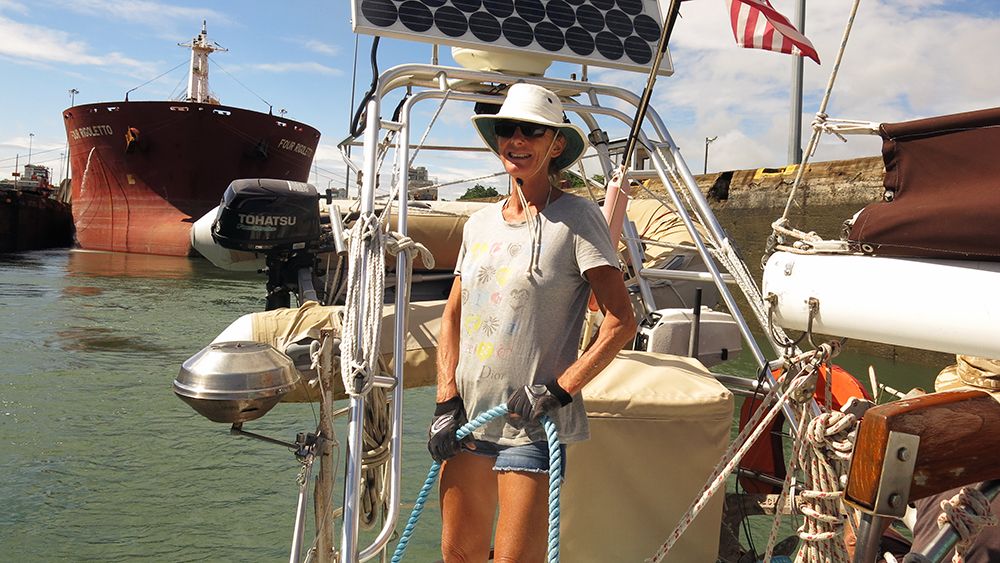
Suzy line handling in the Gatun lock with a large cargo ship behind us
The next morning we entered the Gatun locks ahead of a massive cargo ship which squeezed in behind us filling the width of the chamber with only inches to spare, but we had plenty of space in front. This time we had a centre tie which meant that the line handlers had a bit more to do. Dock hands onshore secured the forward and aft lines around bollards and we were responsible for controlling the lines to hold Mis Gale in position and for easing them as we descended. All went well and as the final lock gates opened we celebrated our arrival in the Carribean Sea.

Neil singing “Money for Nothing” with Tara as groupie
Now we are back at Vista Mar and enjoying a couple of weeks tied up in the marina before we leave for Europe. There’s about a dozen cruising boats here so we’re having a very sociable time: shopping trips into Coronado (the nearest town), sundowners on friends boats and pot luck evenings with a bit of music if someone brings a guitar or Neil brings his keyboards along. We arranged a karaoke evening at the local bar a few nights ago and had a bunch of fun.
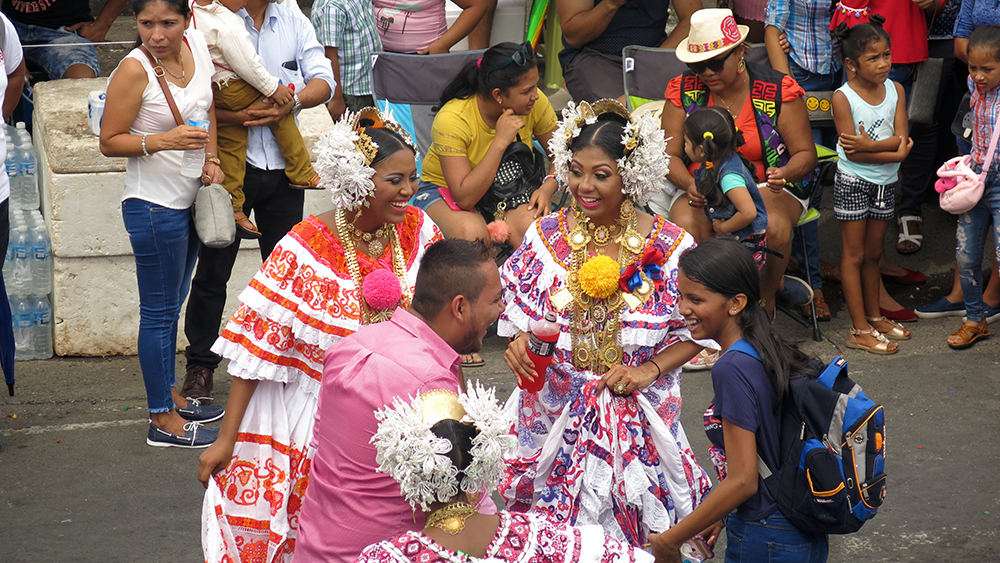
Dancers in the “Los Santos Day” parade at La Chorrera
In November Panama celebrates about four national holidays and last Saturday was the “Uprising of Los Santos Day”. Yep, it sounds a bit obscure but it dates back to 1821 when the village of Los Santos declared it’s independence from Spain. The rest of the country followed suite on 28 November (Independence Day) however it didn’t last long and by the end of the year Panama had been incorporated into Colombia and remained so for the next 80 years or so.
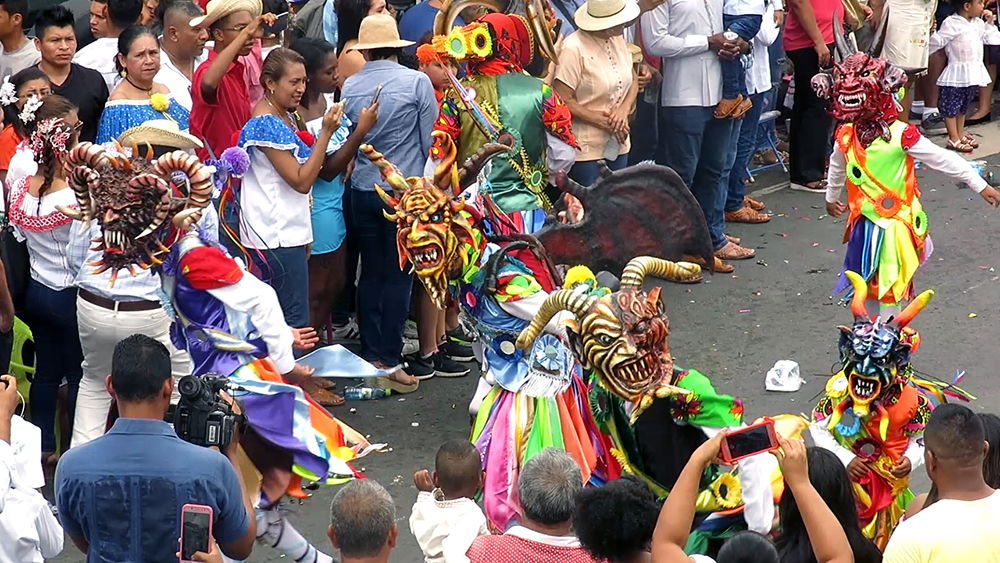
Devil dancers scaring the crowds at the parade in La Chorrera
We went inland to the town of La Chorrera to watch the parade and enjoy the celebration. The girls and young women of the town were beautifully dressed in finely-pleated dresses with plenty of flounces and lace, when a camera was pointed at them they spread the skirt and gave a dazzling smile. The parade featured devils gamboling, groups singing, beating drums and passing around the rum bottle, and floats pulled by oxen decorated with flowers and swaying women. It was a loud and colourful day and even a torrential downpour in the afternoon didn’t dampen the festive spirit.
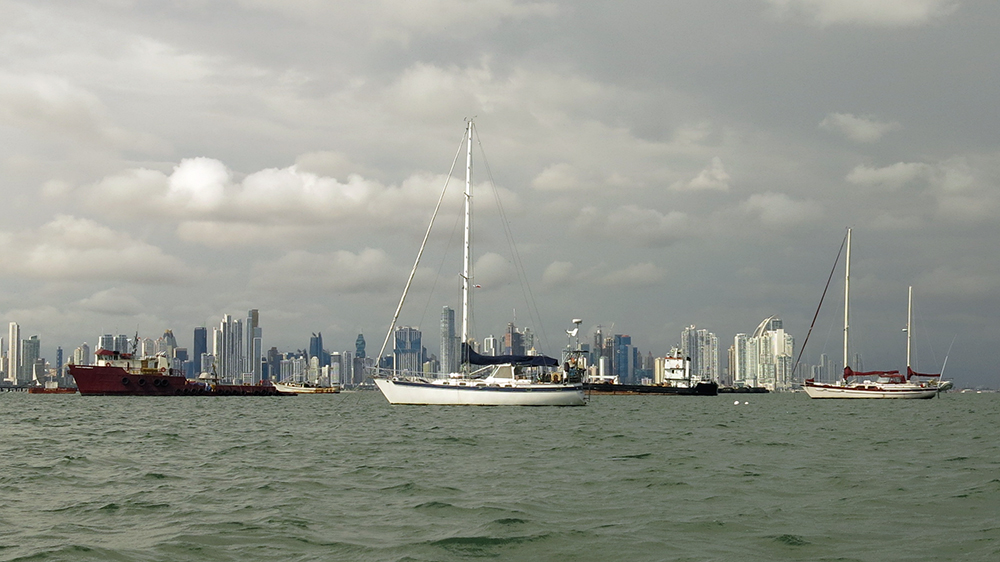
Distant Drummer in the anchorage at Las Brisas, Panama City
In between times we’ve been getting boat jobs done. We have replaced our ancient solar panels with new state of the art ones which are pumping three times more power into the batteries. We have also re-conditioned the alternator (again) so hopefully we will be able to cut down on the time we run the genset and the engine to make power.
We’re leaving for Europe on Thursday so more soon from the frozen North.
Suzy
